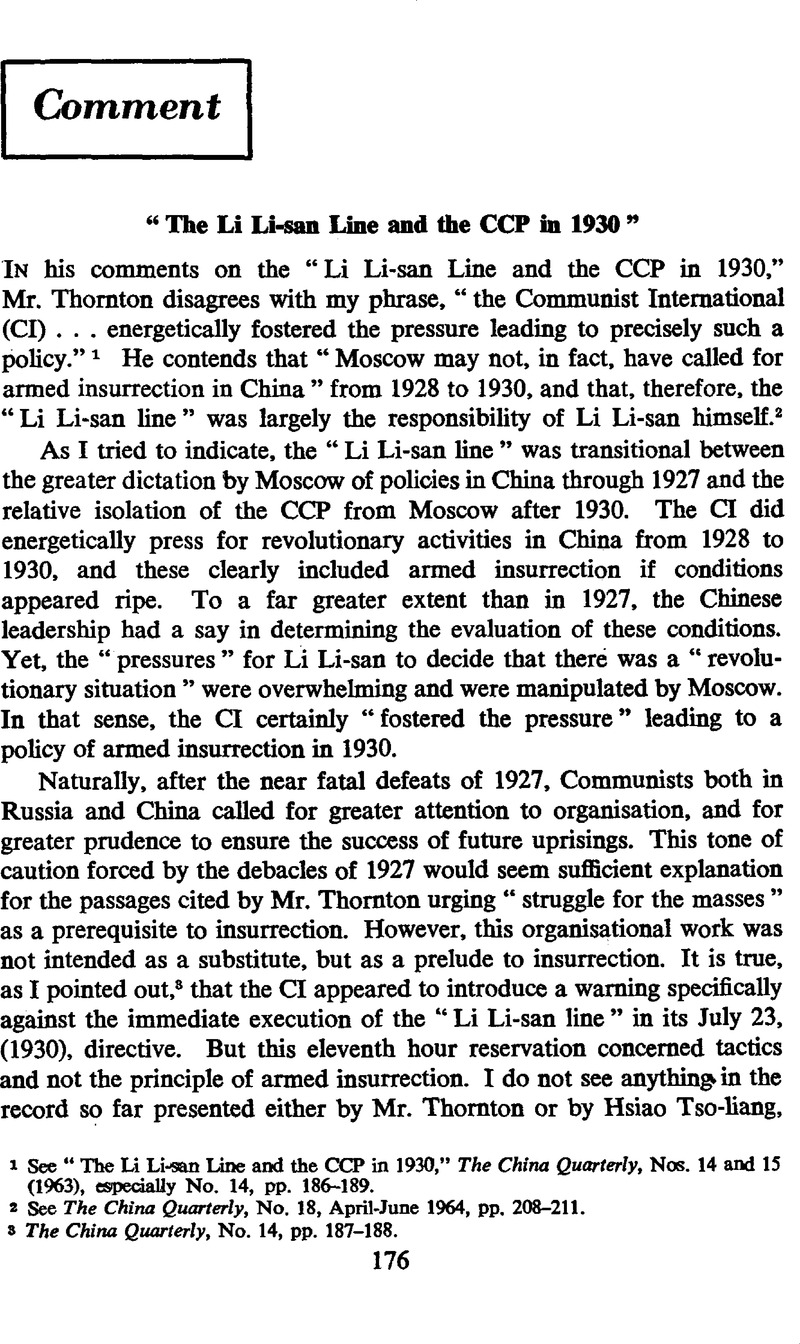No CrossRef data available.
Article contents
“The Li Li-san Line and the CCP in 1930”
Published online by Cambridge University Press: 17 February 2009
Abstract

- Type
- Comment
- Information
- Copyright
- Copyright © The China Quarterly 1965
References
1 See ”The Li Li-sin Line and the CCP in 1930,” The China Quarterly, Nos. 14 and 15 (1963), especially No. 14, pp. 186–189Google Scholar.
2 See The China Quarterly, No. 18, 04-06 1964, pp. 208–211CrossRefGoogle Scholar.
3 The China Quarterly, No. 14, pp. 187–188.
4 Hsiao Tso-liang, Power Relations within the Chinese Communist Movement, 1930–1934. On the other band, although not mentioned by Mr. Thornton, Messrs. Schwartz (Chinese Communism and the Rise of Mao), and North (Moscow and the Chinese Communists), Isaacs (Appendix to the 1938 and 1961 editions of The Tragedy of the Chinese Revolution) and Wittfogel (”Some remarks on Mao's Handling of Concepts and Problems of Dialectics,” Studies in Soviet Thought, III, No. 4, 12 1963, pp. 258–261)Google Scholar appear to go at least as far as I in attributing the formulation of the Li Li-san line to Moscow.
5 See The China Quarterly, No. 14, p. 187.
6 The China Quarterly, No. 14, pp. 185–186.
7 Inprecor, X, No. 18, 04 10, 1930, p. 348Google Scholar.
8 Ibid. X, No. 35, July 17, 1930, p. 595.
9 Roy, M. N., Revolution and Counter-Revolution In China (Calcutta: 1946), pp. 621–622Google Scholar.
10 Tso-liang, Hsiao, op. at., pp. 200–202, 206Google Scholaret seq.
11 Ibid. p. 200.




